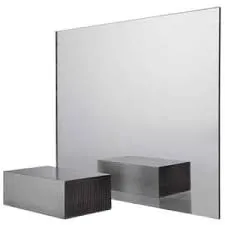

The Process of Tempered Glass An Overview
Tempered glass, also known as toughened glass, is a type of safety glass that has been treated by controlled thermal or chemical processes to increase its strength compared to normal glass. The manufacturing process of tempered glass is meticulously designed to ensure reliability and durability, making it suitable for a variety of applications, from automotive to architectural uses. This article delves into the essential processes involved in creating tempered glass and highlights its benefits.
Initial Steps Cutting and Washing
The process begins with the selection of high-quality float glass, which is cut into the desired dimensions. Precision cutting is crucial as it defines the final product’s size. Following this, the glass sheets undergo an extensive washing process to remove impurities, dust, and oils from their surfaces. Any contaminants that remain can cause imperfections during the thermal treatment, making this step critical.
Heating Process Strengthening the Glass
Once cleaned, the glass sheets are ready for the tempering phase. The glass is loaded into a furnace that reaches temperatures of about 600-700 degrees Celsius (1112-1292 degrees Fahrenheit). This heating is maintained for a specific duration, allowing the glass to heat uniformly. The key to tempering is controlled cooling; after the heating phase, the glass is rapidly cooled using powerful jets of air in a process known as quenching. This rapid thermal cycling creates compressive stresses on the surface of the glass, significantly increasing its strength.
Cooling Phase The Role of Quenching

The quenching process is vital as it ensures that the outer layers of the glass cool faster than the inner layers. This temperature disparity creates a condition known as compressive stress on the surface and tensile stress inside. As a result, tempered glass can withstand impacts and variations in temperature much better than regular glass. This characteristic is particularly beneficial in environments where the glass is exposed to extreme weather conditions or potential physical stress.
Final Inspection and Cutting
After the cooling process, the tempered glass is inspected for quality assurance. This includes checking for any defects or inconsistencies in thickness and clarity. If the glass passes inspection, it can be cut to size for specific applications, although cutting tempered glass after it has been treated is typically not feasible. Thus, all cutting must be done before the tempering process.
Applications Where Tempered Glass Shines
Tempered glass is widely used in various sectors, including residential and commercial buildings, automobiles, shower doors, and glass doors and tables. Its high resistance to impact makes it a safe choice for areas prone to breakage. Furthermore, in the event of breakage, tempered glass shatters into small, blunt pieces rather than sharp shards, reducing the risk of injury.
Conclusion
The process of creating tempered glass involves precise engineering and expert handling from start to finish. From cutting and washing to heating and cooling, each step plays a crucial role in ensuring the safety and durability of the final product. As technology advances, the applications for tempered glass continue to expand, solidifying its position as a preferred choice in various industries. Whether in your home or vehicle, tempered glass provides peace of mind with its strength and safety features, making it an integral part of modern design and architecture.